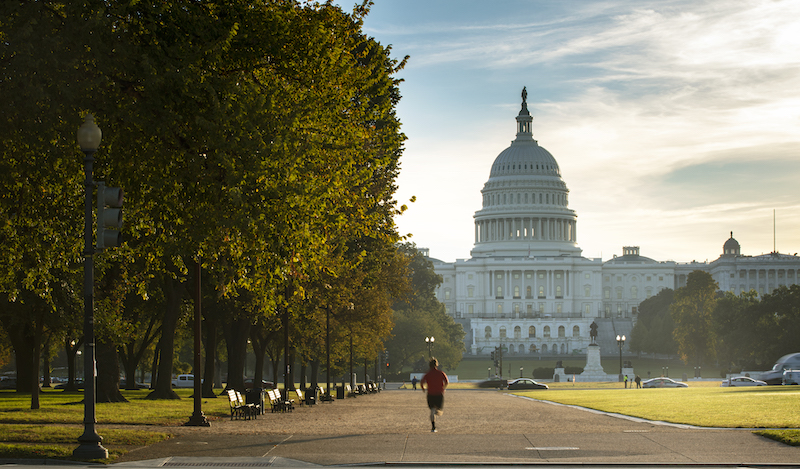
Congress should use notice-and-comment rulemaking as a model for public input in the legislative process.
Regulators have long discussed the value of public participation in policymaking. It is time for legislators to have this conversation too.
Regulators devote significant attention to public input, in part, because they are required to by law. The Administrative Procedure Act mandates that federal agencies notify the public when they make new rules or change existing rules. It then requires agencies to solicit, consider, and respond to public comments before issuing a final rule that is published in the Federal Register. This process is called notice-and-comment rulemaking.
Of course, regulators value public input for reasons beyond these statutory requirements. Commentators can educate an agency by providing evidence that corroborates or identifies weaknesses in an agency’s proposal, ultimately strengthening the agency’s final rule. Furthermore, commentators can offer “on-the-ground experiences, data, or arguments relevant to an agency’s decision,” including underrepresented perspectives to which the agency would not otherwise have access. These perspectives can make the final rule more inclusive and effective for diverse communities.
Legislators also recognize the value of public input. But, unlike regulators, they are not required to solicit public comments during the legislative process.
Instead, Congress offers ad hoc opportunities for public participation. Congressional staff, for example, accept meetings with stakeholders—including public interest groups and businesses—while drafting bills and moving them through the legislative process. In addition, Congress hears testimony from select members of the public during hearings. Elected officials also accept phone calls from members of the public, and some offices log and track these calls to inform future legislation.
But these methods of public participation have their limitations. Legislators have discretion over which meetings to accept, which hearings to hold, and whose perspectives to consider when drafting bills. In fact, research shows that the 114th Congress heard from 80 percent fewer witnesses than in previous decades, and there are no signs that this trend has improved.
Under these methods, elected officials are not soliciting input from the broader public, leaving it up to individuals to discern whether their feedback is actually welcome. Furthermore, many people—often, by definition, the most underrepresented—do not belong to the public interest groups with which congressional staffers typically meet.
In contrast, notice-and-comment rulemaking is more accessible to the public. Agencies request comments from the entire public—rather than selecting a few individuals from whom to hear input or waiting to be contacted by stakeholders—and are required to consider all relevant comments in their final rules. As a result, regulators cannot decide that only some perspectives deserve to be incorporated into the rulemaking process. Notice-and-comment rulemaking enables all members of the public—whether collectively or individually—to have their voices heard in the regulatory process.
Given the advantages of public input, why are federal agencies required to solicit comments, but not Congress? There are three potential explanations, but none are strong enough to justify the lack of a public input requirement in Congress.
First, Congress may have imposed public input requirements to promote greater transparency and accountability in the administrative state. Congress has an interest in closely regulating federal agencies because it is responsible for passing the statutes that create and empower them. As a result, Congress may view public input as one tool to make federal agencies beholden to the public—the constituency Congress ultimately represents.
Although there is not a formal institution that is responsible for regulating Congress, the legislature is beholden to the public. Consequently, the public has similar interests in Congress remaining transparent and accountable to them. If public input is a tool that promotes these values in rulemaking, it could do the same for legislation.
Second, Congress would be self-regulating—rather than regulating an external entity such as a federal agency—if it imposed public input requirements on itself. But self-regulation is challenging. Congress would need to have internal agreement, for example, about what requirements to impose despite the challenges in overcoming political gridlock and polarization. Furthermore, Congress would need to assume these additional responsibilities despite its well-known lack of resources.
Although these self-regulation challenges are significant, they are worth overcoming. Despite the common perception that Congress cannot find common agreement, legislators have passed a surge of bipartisan laws on less politically charged issues over the past year. Congress may have more success discussing internal standards, which are potentially even less controversial than bipartisan issues. If a lack of resources is of concern, Congress can learn from agencies of varying sizes and budgets that have developed methods to efficiently accept and review public comments.
Finally, some members of Congress may believe that Congress does not need a formal public input requirement because the legislative process inherently includes public participation. Elected officials are chosen by their constituents to represent those constituents’ interests. As a result, public participation is part of the legislative process in the form of elections.
But reality falls short of these ideals. Elected officials can be as beholden—if not more—to external stakeholders and their political party as they are to their constituents. A formal public input requirement encourages public participation throughout the legislative process and could provide better evidence of what constituents want—and evidence of when elected officials deviate from those preferences.
These three explanations fail to justify the lack of public input requirements for Congress to follow when adopting legislation. Consequently, Congress should formalize its procedures to solicit public comments—using notice and comment rulemaking as a model—to incorporate diverse perspectives throughout the legislative process. Ultimately, public input will enable Congress to pass more inclusive, equitable, and effective laws.
As the people’s branch, Congress should have a more democratic and open lawmaking process that makes it easy for all individuals—including those who are most marginalized—to have their voices heard.



